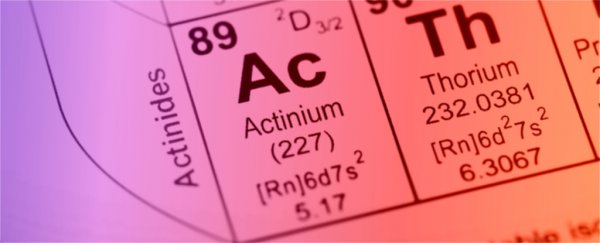By applying an algorithm to a strange section of the periodic table of elements, physicists have at last been able to predict which elements could pair up with hydrogen to create a room temperature superconductor - one of the "holy grails" of physics.
That's incredibly exciting, because finding a material that can conduct electricity with zero resistance at higher temperatures could lead to super-efficient devices, and electricity grids that don't burn up to 7 percent of their energy to resistance.
We've already found plenty of superconductive materials, but they either need to be cooled down to extremely cold temperatures or put under intense pressure.
Now, researchers from the Moscow Institute of Physics and Technology and Skoltech, Russia, have devised a process to pick out which of a special type of metals, known as actinides, in the periodic table would be stable enough under certain conditions to exhibit superconductivity.
And it's already led to the discovery of a material that could become a superconductor at a relatively toasty minus 20°C (minus 4°F) - although it still needs to be squeezed under high pressure.
The actinides are a series of 15 metals with large atomic numbers 89 to 103 (actinium to lawrencium), sitting alongside that other weird 'outside' block of elements, the lanthanides.
Observations of the way various metal hydrides conduct electricity at certain temperatures had led researchers to suspect there was a pattern reflected by their positions in the periodic table, but the exact link wasn't clear.
Trial and error led them to find elements in the actinide series provided some borderline cases, indicating this was a good place to look for clues.
So a group of researchers led by chemist Artem Oganov set about to develop an algorithm that would match the properties of actinide hydrides with their superconductivity.
"The very idea of a connection between superconductivity and the periodic table was first put forward by Dmitry Semenok, a student at my lab," says Oganov.
"The principle he discovered is very simple and it is really amazing that no one had hit upon it before."
Finding ways to predict which elements can be arranged to form a superconducting material is a pretty big deal in a world that's focussed on squeezing every drop of energy from a power source.
Imagine a perfect wire that allowed electrons to slide along without bumping into any atoms, flowing without wasting energy in the form of heat.
Superconductors facilitate this by allowing their electrons to entangle with a partner to form a Cooper pair, which is like the quantum equivalent of putting them into the carpooling lane.
There needs to be something to hold these pairs near one another, which in most superconductors is achieved through vibrations in their structure called phonons.
Phonons are delicate things, so the material needs to be chilled right down below something like minus 234.5°C (minus 390.1°F).
That's all well and good in a laboratory, but if we want superconductivity on our desk we'll need something that doesn't require huge banks of specialised cooling equipment.
Since the 1980s, researchers have found some special materials can form stable Cooper pairs through another kind of interaction using their electrons.
The new record holder for warmest superconductor was found in stinky old 'rotten egg gas' hydrogen sulfide, which still had superconducting powers at minus 70°C (minus 94°F). That puts it in the range of liquid nitrogen cooling!
Unfortunately, to do this, it also needed to be squeezed under 1.5 million atmospheres of pressure. Easy come, easy go.
Still, the hunt continues for ways to make materials that keep their zero resistance currents at relatively warm temperatures, without the need for huge amounts of pressure.
This new algorithm used the arrangements of the electrons in the actinide series of elements to predict which could team with hydrogen to provide an ideal lattice, one that would result in a strong electron-phonon interaction.
The result is the discovery of superconducting actinium hydrides that could be as warm as minus 20°C (minus 4°F).
They still need 1.5 million atmospheres of pressure, but having a better handle on how to pick and match elements to create 'warm' superconducting materials is a find worth paying attention to.
While there are still plenty of hurdles to overcome before we can expect to have resistance-free technology in our home, discovering a general principle linking the phenomenon with the periodic arrangement of elements is a significant step forward.
This research was published in The Journal of Physical Chemistry Letters.
